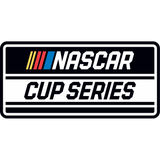
Ryan Newman meets with NASCAR to discuss safety

Add Richard Childress Racing driver Ryan Newman to the list of those wanting to make their voices heard to NASCAR about ways to improve safety.
With NASCAR and tracks under increasing pressure to beef up "soft wall" technology in light of multiple incidents this season, Newman met with NASCAR officials last week to offer his thoughts, according to NASCAR.com.
Four-time Sprint Cup Series champion Jeff Gordon was scheduled to have a similar meeting with NASCAR officials on Tuesday at the NASCAR R&D Center in Concord, North Carolina, nine days after his No. 24 Chevrolet struck a non-protected part of the wall in the March 1 Sprint Cup race at Atlanta Motor Speedway.
Gordon, who was uninjured in the crash, immediately criticized NASCAR and AMS for not having SAFER (Steel and Foam Energy Reduction) barriers covering all of the track's walls. The wreck came eight days after Kyle Busch suffered a compound fracture of the lower-right leg and a mid-foot fracture of his left foot in a head-on collision during the NASCAR XFINITY Series season opener at Daytona International Speedway.
Busch, whose No. 54 Joe Gibbs Racing Toyota also hit an area of the wall unprotected by a SAFER barrier, missed the next day's Daytona 500 and is out indefinitely.
A third incident involving a driver hitting an unprotected wall occurred with Busch's XFINITY Series fill-in, Erik Jones, in last Saturday's XFINITY Series race at Las Vegas Motor Speedway.
"We've encouraged open dialogue throughout the entire industry," NASCAR executive vice president and chief racing development officer Steve O'Donnell told NASCAR.com. "We met with Ryan Newman last week and walked him through the plans that the tracks are making, and it's a very similar situation here where we talked to Jeff throughout the week.
"(Gordon) was interested in our plans and we invited him to the R&D Center. He's a busy guy, but taking the time to meet with our staff there is a great opportunity for us to walk him through what plans are in place and get his feedback. He's certainly got a great deal of knowledge within the space, so we can really lay out our plans and bounce those off of him, get his feedback and apply what we can from those learnings in the meeting."
Officials from numerous tracks, starting with Daytona, have announced their intentions to add more SAFER barriers in the weeks and months ahead, but it isn't entirely clear when they will be ready.
"My question is, 'What is the time frame to have those built and installed?'" Gordon said last weekend at Las Vegas. "I think everybody knows it's a priority, but it seems to be kind of pushed further a long since Kyle's accident. Where were we prior to Kyle's accident on that plan?"
While SAFER barriers have been around NASCAR since 2002, some tracks have been faster than others to implement the technology, which reduces G-force impact kinetic energy by more than 50 percent.
"What always comes to mind to me, literally, is when I hit a non-SAFER barrier wall, I go, 'Wow, what did I just hit? What was that?'" Gordon said. "I'm always caught off guard by the impact and how severe it is. When I get out of the car, my first thing is I want to see what I hit. Every time I have felt that, it is because I hit something that was not protected with SAFER barrier. ... It's a huge difference. But I also understand there are angles that are better for hitting it. There are some that a tire type of barrier might be better for a straight-on impact. There are some where tires are not good for impacts because of how it grabs the car and wants to flip it over or spin it around and can propel it back out in traffic.
"To me, every area that they say, 'Yes, that wall would be safer with a SAFER barrier,' it needs to have a SAFER barrier, and we need to know what the time frame is and when it is going to become a SAFER barrier."






